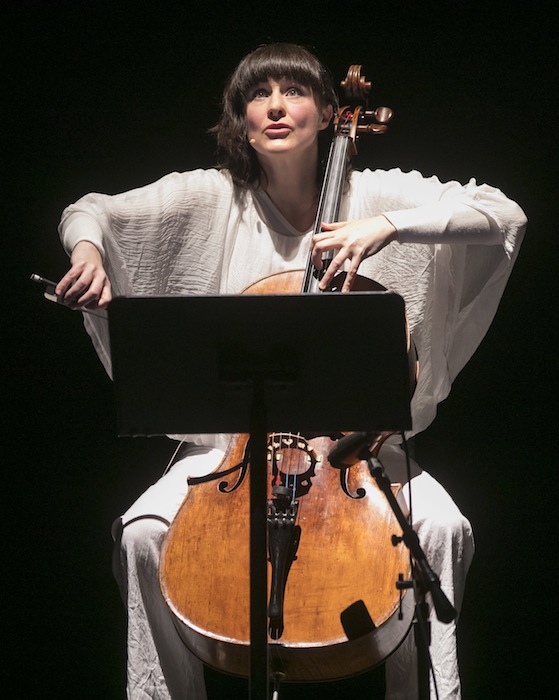MusicNOW tribute rightly celebrates Boulez legacy with new music

In planning the 2016-17 MusicNOW season, it was natural that the Chicago Symphony Orchestra would program a Pierre Boulez tribute in its new-music series. The French composer-conductor, who passed away in January of 2016, enjoyed a close artistic partnership with the orchestra for over a quarter-century–first as principal guest conductor and later as conductor emeritus.
In the program, “Illuminating Boulez,” presented Monday night at the Harris Theater, the CSO offered two commissioned world premieres in honor of Boulez by Pauline Oliveros and Marcos Balter to supplement three Boulez cornerstones—Dérive I, 12 Notations for Piano, and Mémoriale.
The program, inevitably, served as a double eulogy; Oliveros died the day after the CSO received the score to her For Two or Three Instruments (2016), making it the last work the composer completed. Upon learning of Oliveros’ death, Balter changed course entirely, scrapping his commissioned Dialogue de l’ombre double in favor of a dual homage to both composers.
The late master’s music was well served by Monday night’s tribute. All five selections were profoundly memorable, interpreted superlatively by the musicians under conductor Cliff Colnot.
Boulez’s Dérive I led off the evening. The composer’s music is often described as “hard” or “prickly.” But, as Colnot and company demonstrated in this concise 1984 work for sextet (flute, clarinet, violin, cello, vibraphone
and piano), at its core, his music is a fine-featured thing. Like light through a leaf, there is sensitive ensemble interplay and Colnot’s elastic ebb and flow highlighted the delicate thematic veins of this music. The CSO ensemble was as cohesive as could be; the spiccatoed nontuplet which concludes the piece was perfectly crisp and in time.
The printed program order was reshuffled to feature Oliveros’ piece next. For Two or Three Instruments thrives on the ambiguities implicit in its title. The freely improvised work is not notated but rather based on a set of causal performance directions. Per her “Deep Listening” philosophy, Oliveros’ work requires the musicians to simultaneously listen and play with equal intent but opposite responses. (“If you hear a short sound or tone, play a long sound or tone”; “if you hear a three- to five-note figure, try to play it in reverse.”)
These wide-open parameters of the piece left plenty of room for creativity on the part of the three superb interpreters–bass Robert Kassinger and cellist Katinka Kleijn plus genre-crossing saxophonist Mars Williams. The trio bounced off each other with extended techniques on their respective instruments: percussive hits on the bass and cello, breathiness and non-tonal screeches from the saxophone. (In a poignant if heavy-handed move at piece’s end, Williams removed his mouthpiece and sighed through his instrument in a long exhalation, like a last breath.) Despite being wholly improvised, the trio’s attention to motivic detail resulted in a cohesiveness that almost belied the piece’s ephemeral nature. It was a true swan song—and performance—worthy of Oliveros and her legacy.
Pianist Conor Hanick steered the evening back to Boulez with the celebrated Notations for piano. Hanick worked on the Notations with Boulez himself, and it showed in his brilliant and vibrantly colored interpretation. The individual character of each short vignette was exquisitely rendered, from the quarrelsome fourth notation to the tempest-like sixth and the thundering final notation.
The prospect of uniting Boulez and Oliveros’ musical sensibilities in a single piece seems daunting, to say the least. But in both name and character, Balter’s shadows of listening (2017) rose to the task. Scored for cello and electronics, Balter’s work requires the cellist to half-sing, half-declaim an original text which scrambles the three René Char poems used in Boulez’s Le marteau sans maître. With lines like “I dream the solitude … the woods / the dead waves … I listen,” the transfigured poem, ingeniously, ends up as much of a hat-tip to Oliveros as Boulez.
By a similar musical sleight of hand, Balter takes Boulezian motifs—rapid-fire runs, live call-and-response with an electronic doppelgänger—and maps them onto Oliveros’ probing, noise-drunk aesthetic. Recorded feedback blooms around the cello’s live lines like a halo, ringing in effervescent consonance one moment then buzzing with gritty dissonances the next. Kleijn’s stunning interpretation brought performance art into the mix, reciting the text in a breathy whisper and at times twitching her head like an automaton.
The concert ended fittingly with Mémoriale, offering a deserved if brief showcase for CSO principal flute Stefán Ragnar Höskuldsson. Colnot led the orchestra through seamless, unforced tempo changes. True to Mémoriale’s chamber-like ethos, Höskuldsson’s inquisitive, warm solo line complemented rather than dominated the ensemble.
World premieres are often overshadowed by the established repertory works they are programmed alongside. “Illuminating Boulez” succeeded, resoundingly, in striking the delicate balance between celebrating a composer’s towering legacy while presenting new works that are equally significant, regardless of context. A better au revoir could scarcely be imagined.
Posted in Performances




